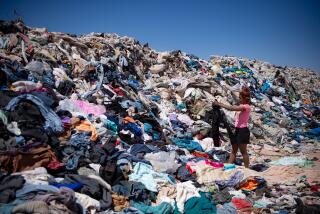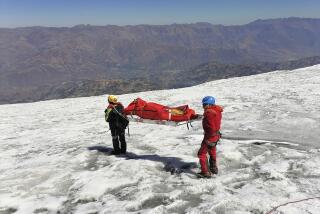Climbers’ Legacy: Mountain of Garbage
- Share via
KATMANDU, Nepal — Mt. Everest remains majestic and remote, but it is no longer pristine. In the 40 years since it was conquered, it has become the world’s tallest garbage dump.
Plastic bottles, cooking gas cylinders, oxygen tanks, frayed ropes, rusted sardine cans, dead batteries and toilet paper litter the well-trod route to the summit reached by Edmund Hillary and Tenzing Norgay on May 29, 1953.
An estimated 50 tons of garbage is strewn over the mountain. On the South Col, the mile-high snow bank 3,000 feet below the peak where climbers prepare for the last push to the top, as much as 17 tons of trash have accumulated.
In the beginning, no one imagined the problem.
“At the time of our expedition, concern about the environment was not common anywhere in the world,” Hillary said in an interview. “We heaved our rubbish around with the best of them.”
Nepalese law now requires mountaineers to bring their refuse back down the mountain, but enforcement is a problem. Fines are rarely levied.
Rare cleanup efforts have hardly made a dent. In 1984, police collected and destroyed thousands of pounds of refuse in a one-time operation.
The number of climbers causes the problem to grow. Eighteen expeditions involving more than 400 people are making the attempt this spring.
More to Read
Sign up for The Wild
We’ll help you find the best places to hike, bike and run, as well as the perfect silent spots for meditation and yoga.
You may occasionally receive promotional content from the Los Angeles Times.






